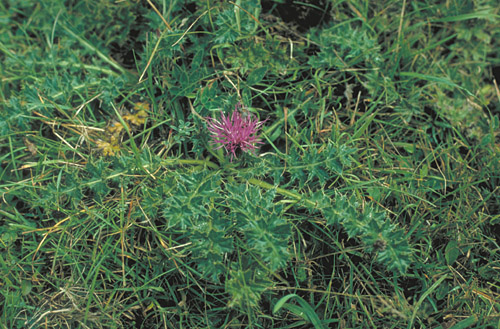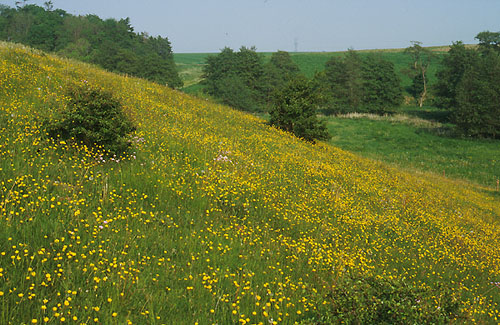
|
Through the summer a lot of
plants can be seen as Hypochoeris radiata, Stellaria graminea,
Hieracium pilosella, Knautia arvensis, Rumex acetosa, Achillea
millefolium, Centaurea jacea, Polygala vulgaris, Thymus pulegioides,
Succisa pratensis amd grasses as Festuca rubra, Poa
pratensis, Anthoxanthum odoratum, Cynosurus cristatus, Poa
trivialis, Agrostis tenuis and Holcus lanatus.
On grassland on calcerous clay some lime-loving species can be found
as Filipendula vulgaris, Briza media, Linum catharticum,
Leontodon hispidus, and Cirsium acaule.
Many of the plants species growing on grassland are adapted to
grazing e.g. Cirsium acaule (picture left) as it is very stinging and
the flowers are developed near the surface of the ground.
Other typical species occasionally seen between the common are Carex
caryophyllea, Helictotrichon pratense, Helictotrichon pubescens,
Danthonia decumbens, Hieracium lactucella, Primula veris and
occasionally Orchis mascula.
|

